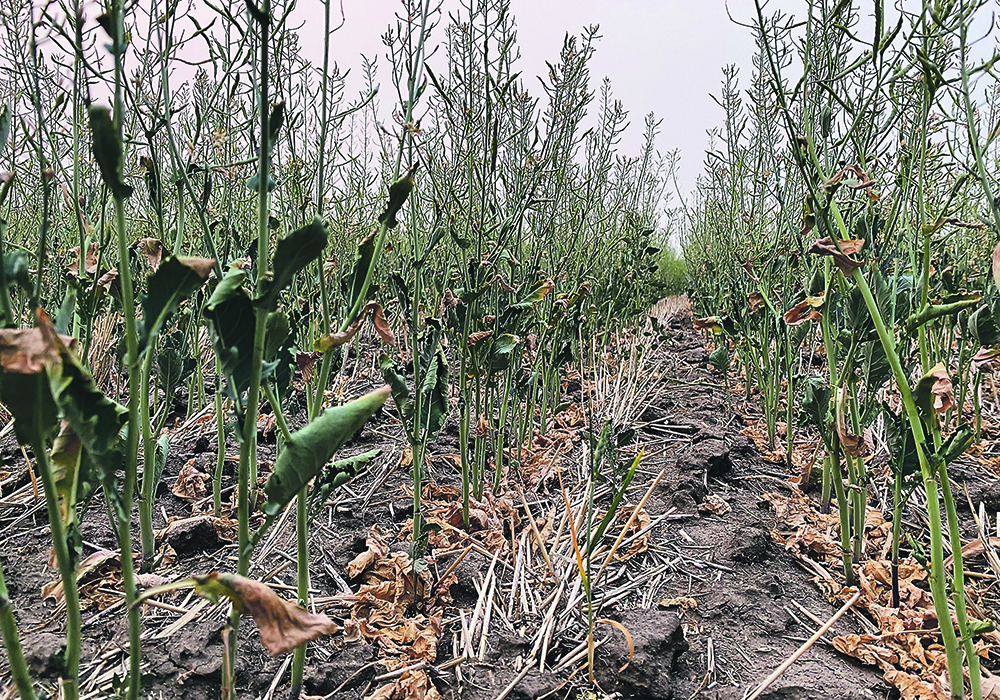Discovery of the gene has helped scientists reverse the shortcoming and boost plants’ defences in rising temperatures
Heat waves hitting Europe, the United Kingdom, as well as regions of Canada and the United States are threatening plants as well as people.
While scientists have known that heat suppresses a plant’s ability to make salicylic acid, the defence hormone that protects plants against pests, they have not understood why plants suffer this immunity meltdown at a seasonal growth time when protection is most needed. Even at barely 30 C, plant defenses start to break down, leaving them open to infection by pathogens.
That lack of clarity leaves a significant gap in understanding how a warming climate with frequent and extreme heat waves will influence plant immunity and it presents obstacles to developing heat-resilient crops.
Read Also

Russian wheat exports start to pick up the pace
Russia has had a slow start for its 2025-26 wheat export program, but the pace is starting to pick up and that is a bearish factor for prices.
Now, scientists at Duke University and Wilfrid Laurier University together with colleagues at Yale University, the University of California, Berkeley, and Tao Chen Huazhong Agricultural University in China have identified a specific protein that controls the production of salicylic acid yet falters in the face of rising heat.
They have developed a way to reverse the shortcoming and boost a plant’s defences in rising temperatures.
“We have known for decades that warmer temperatures impair a plant’s ability to produce salicylic acid,” said Christian Danve Castroverde, assistant professor with the Department of Biology at Wilfrid Laurier University. “Because salicylic acid is important to fire up the plants’ immune systems, plants become more vulnerable to pathogen attack at these higher temperatures. This is significant since global warming will increase the risk and prevalence of certain pathogens and insect pests and will impact agricultural yields.”
Using Arabidopsis thaliana, a thale cress frequently used in laboratory research, the team discovered that heat turns off a gene called CBP60g. This gene acts like a master switch controlling other genes, so if CBP60g is turned off, so are many of those in its orbit. Once turned off, those genes lose their ability to enable a plant cell to build up salicylic acid.
Castroverde said high temperatures short-circuit CBP60g, and switch off numerous plant immunity genes.
Just how plants know when hot is too hot is still a mystery.
“We do not know how plants directly feel heat in the context of turning off the defence hormone,” he said. “The way plants decrease this ability is actually gradual. We did not publish this data, but for each incremental increase in temperature, plants gradually decrease production of salicylic acid. Then, at around 28 C, it seems completely shut off.”
An independent research team had learned that molecules in plant cells called phytochromes function as internal thermometers, helping plants sense warmth in spring which, in turn, triggers growth.
Castroverde and his colleagues wondered if these heat-reacting molecules could be affecting the immune system. To find out, they experimented with both normal Arabidopsis and mutant ones whose phytochromes had been permanently activated.
“These were genetically engineered phytochrome mutants that have their phytochromes always switched on, regardless of the temperature,” said Castroverde.
The plants were infected with the Pseudomonas syringae bacteria, then grown at 22.7 C and 27.7 C.
Normally, when this pathogen attacks, the levels of salicylic acid in the plants’ leaves go up seven-fold to keep the bacteria from spreading. But not only did the normal plants fail to make enough of the defence hormone to keep infection at bay, the mutant plants also failed to produce enough salicylic acid in the hotter temperature.
The research team used next-generation RNA sequencing to compare gene readouts in infected plants at both normal and elevated temperatures. Next-generation RNA sequencing is a way to process millions of DNA-encoded RNA fragments simultaneously. It was during these readouts when they learned that many of the genes that were suppressed at elevated temperatures were regulated by the single molecule, CBP60g.
Further experiments showed that the cellular systems needed to read out the genetic instructions in the CBP60g gene does not assemble properly when it gets too hot.
Researchers then showed that Arabidopsis plants that had their CBP60g constantly “switched on” were able to keep their defence hormone levels up and bacteria at bay, even in hot temperatures.
“To switch on the CBP60g regardless of temperature, we used a different promoter sequence to activate the gene regardless of temperature,” said Castroverde.
They then engineered heat-resilient plants by adding another sequence to selectively switch on the CBP60g gene only when it was under attack by pathogens. This was an essential part of the research to protect crop defences without impacting crop yields.
Follow-up experiments to restore CBP60g gene activity in rapeseed so far have shown promising results. Currently, field trials on rapeseed are being conducted in China.
“We think that this basic knowledge will be quite useful for breeding heat-resistant varieties of cool weather crops like rapeseed, which is grown a lot in Canada,” he said.
In Arabidopsis, keeping the CPB60g master switch from feeling the heat not only restored genes involved in making salicylic acid, but it also protected other defence-related genes against warmer temperatures too.
Yet a tantalizing question remains and perhaps an answer lies in the very evolution of plants.
“The question of why would plants turn off a master immunity switch remains outstanding,” said Castroverde. “We will be working on this question for the next few years. It may have something to do with plants needing to re-allocate their resources to prioritize other aspects of their biology under changing environmental conditions. But we still need to test that in the lab.”
The research was published recently in the journal Nature.















